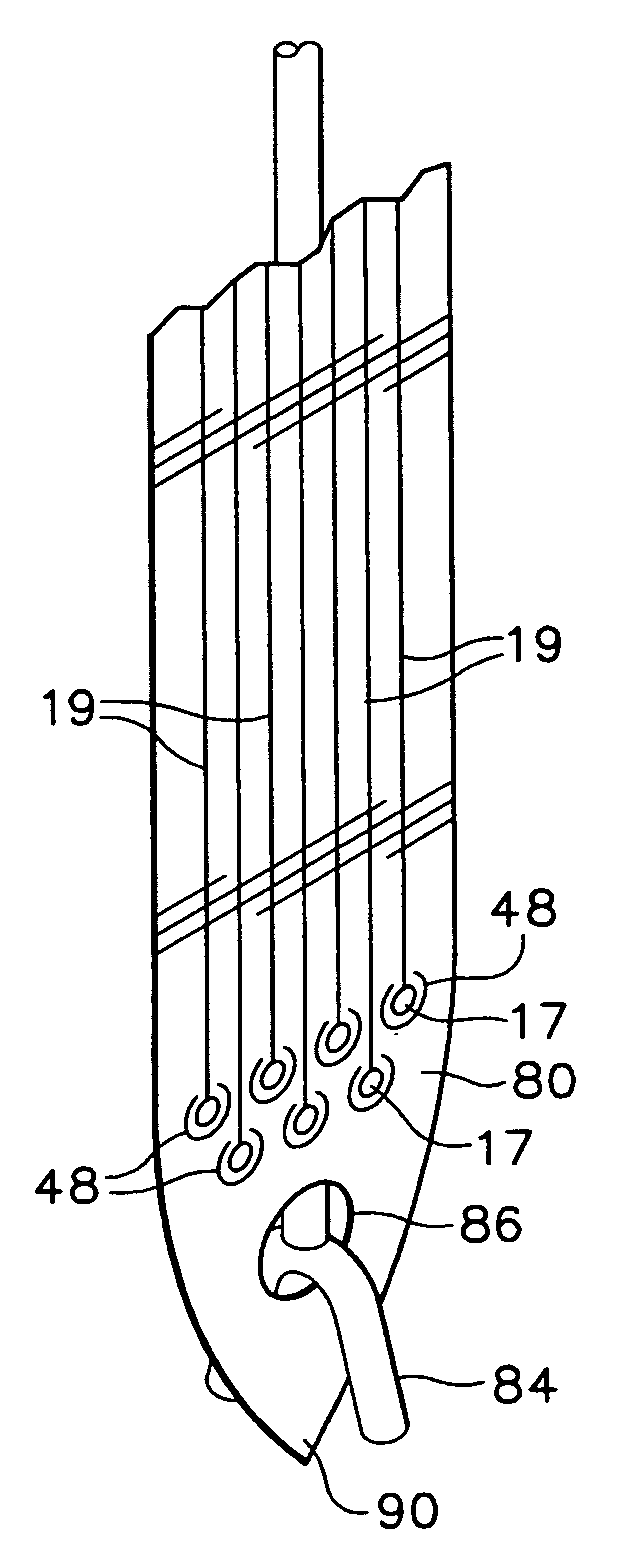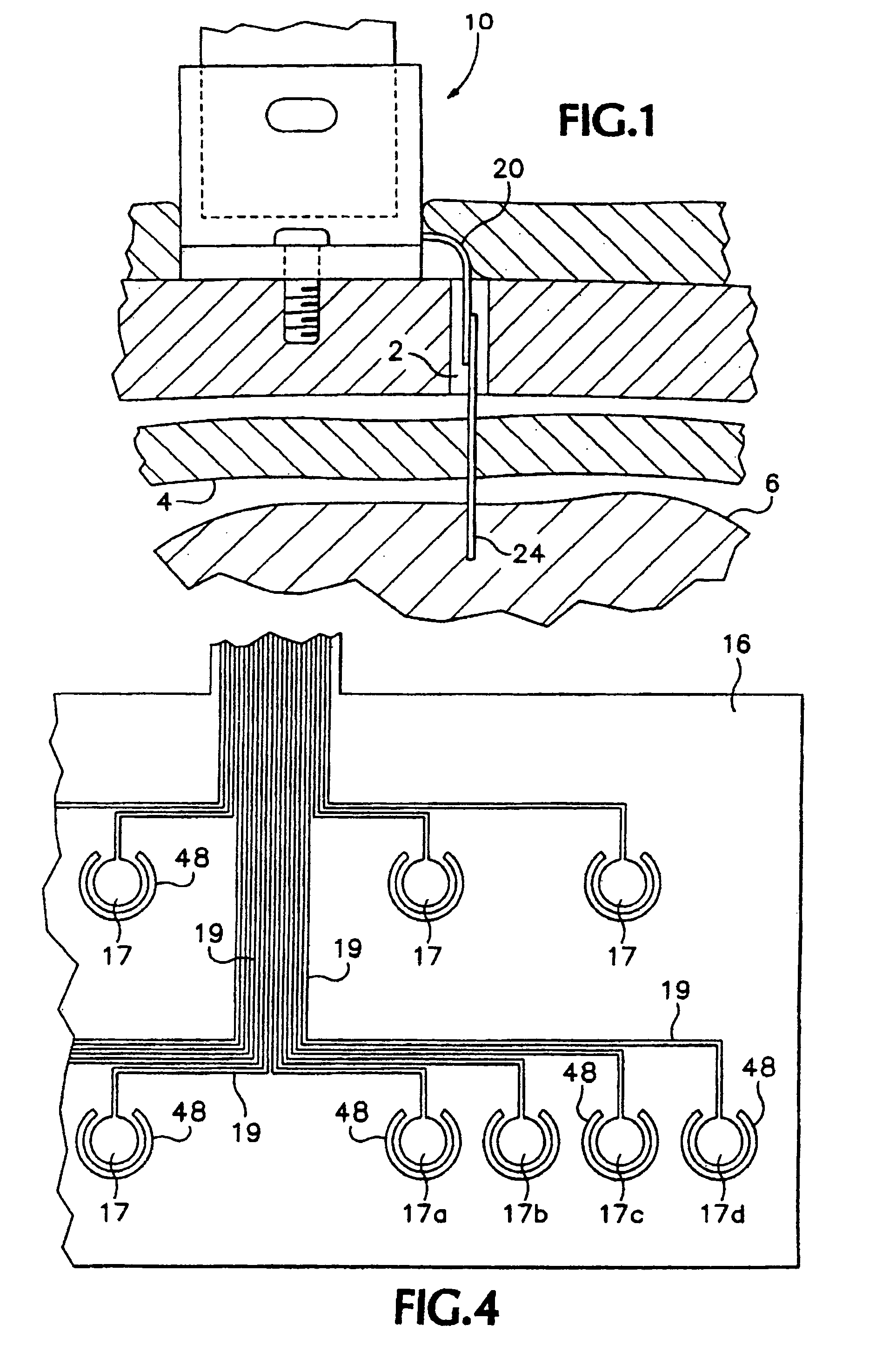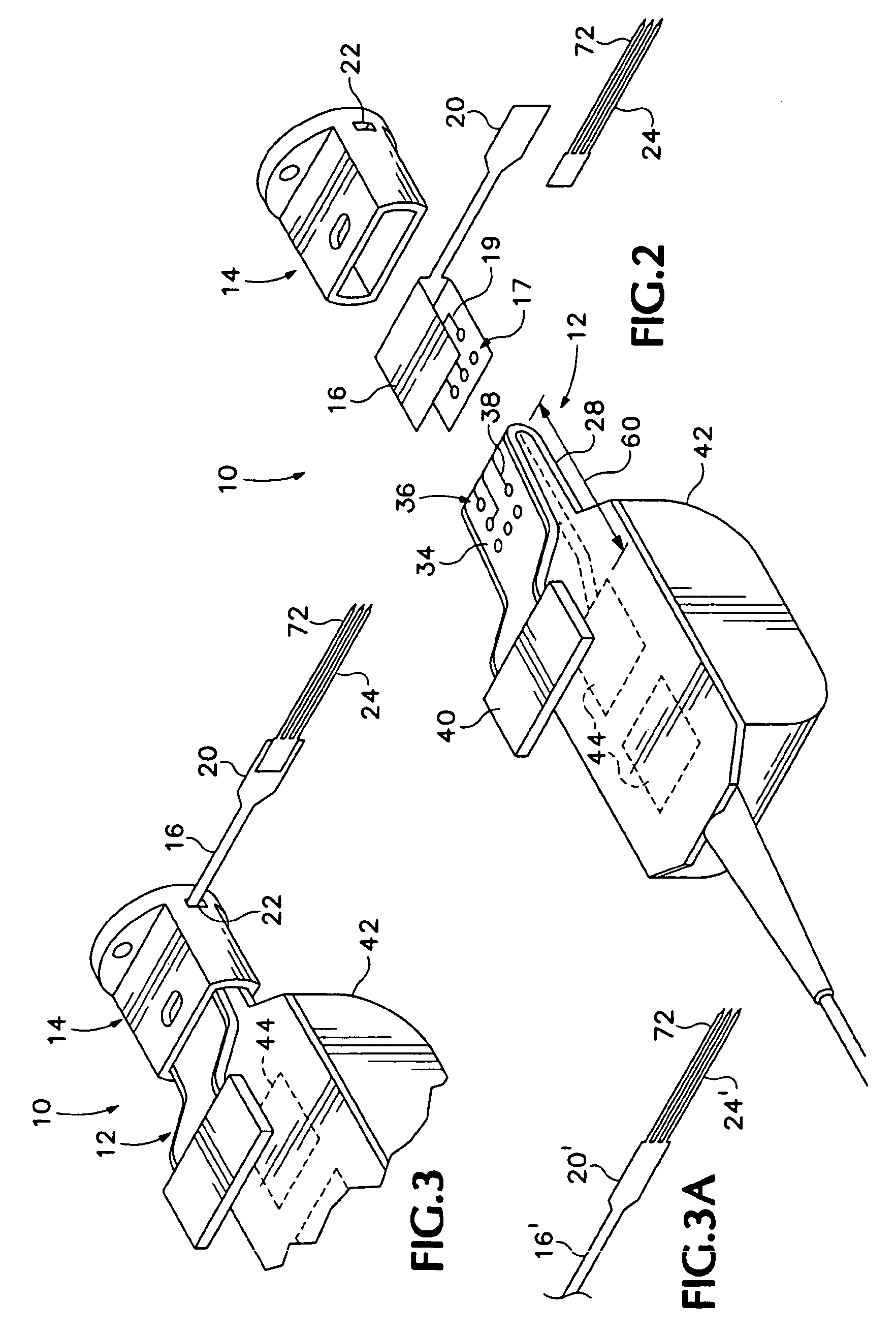Flexible bio-probe assembly
- Summary
- Abstract
- Description
- Claims
- Application Information
AI Technical Summary
Benefits of technology
Problems solved by technology
Method used
Image
Examples
Embodiment Construction
[0022]Referring to FIG. 1, a percutaneous connector 10 is screwed into the skull 1 and is connected, by way of a multi-conductor microcable 20, to a brain probe 24 that passes through an aperture 2 in the skull, through the dura 4 (and into the brain 6), for measuring brain activity at a specific set of points.
[0023]Referring to FIGS. 2, 3 and 3A a percutaneous connector 10 according to the present invention includes a male-half 12, a female-half bracket 14 and a female-half flex circuit (or flexible polymer) connective assembly 16 bearing a set of contacts 17 and conductive traces 19. A multi-conductor microcable 20 forms a portion of assembly 16 and is threaded through an aperture 22 in bracket 14. The microcable 20 attaches to and extends traces 19 to brain probe 24. As shown in FIG. 3a in an alternative embodiment, a connective assembly 16′ includes a microcable 20′ that includes a brain probe 24′ as a unitary part of its construction. The male-half includes a resilient clip por...
PUM
 Login to View More
Login to View More Abstract
Description
Claims
Application Information
 Login to View More
Login to View More - R&D
- Intellectual Property
- Life Sciences
- Materials
- Tech Scout
- Unparalleled Data Quality
- Higher Quality Content
- 60% Fewer Hallucinations
Browse by: Latest US Patents, China's latest patents, Technical Efficacy Thesaurus, Application Domain, Technology Topic, Popular Technical Reports.
© 2025 PatSnap. All rights reserved.Legal|Privacy policy|Modern Slavery Act Transparency Statement|Sitemap|About US| Contact US: help@patsnap.com



